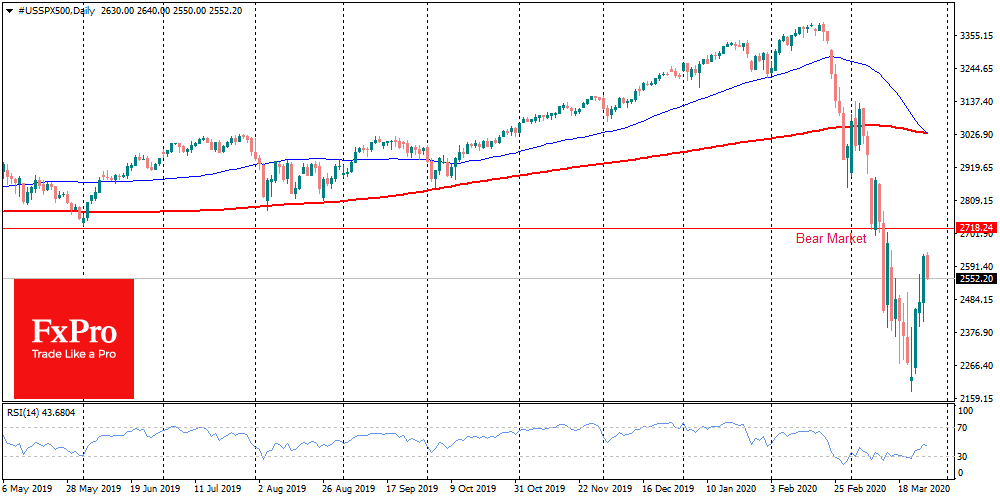This is a rebound, not growth: the worst is yet to come
March 27, 2020 @ 14:19 +03:00
American indices rose by more than 6% at the end of trading on Thursday. On Friday, Asian indices supported the growth after some fluctuations. Expectations of government stimulus intensified investors’ purchases. $2.2 trillion from the U.S. government was complemented by a new package of 344 billion from China, in addition to a steady stream of similar news from other European and Asian countries. These are factors that improve market sentiment, while central bank actions and closing short positions should be considered as drivers for purchases.
Central banks are flooding markets with liquidity by announcing aggressive asset purchase measures on their balance sheets. The Fed is especially successful in the expansion of its balance sheet. It will receive 454 billion from the government stimulus package, which can turn it into trillions of new loans issued. Similar stories can be told about China and Europe.
Covering short positions further enhances the market rebound. Futures on the S&P 500 at the beginning of the day were 21% above the lows of the week. Some investors define the bull market as a 20% increase from the lows.
However, a more cautious valuation method requires not only that the indices increase from lows, but also signs of economic stabilization. There are still certain difficulties with this. Published data on the number of new jobless claims in the United States came out at 3.28 mln. (more than three times worse than average expectations). And that was the reaction of the labour market for the week up to March 21, for which the number of new cases increased by 21.4k. But since then there has been a dramatic deterioration: only yesterday the increase in the number of cases in the U.S. exceeded 17k.
By this indicator, it is difficult to see signs of stabilization or even improvement. Europe and most of Asia can also hardly boast that they have taken control of the situation. This promises to result in more harsh quarantine measure in the coming days and weeks.
The economy has clearly not yet reached its lowest point. Statistical reports are even further from that point. At the same time, the incentives promised by governments are a measure of long-term consequence control. Losing their jobs or facing (almost) a complete drop in sales, consumers and businesses will show a very limited demand in the coming months.
The flooding of markets with money from central banks has satisfied the demand for cash, primarily dollars, but until we see signs of recovery in consumer demand and business activity, it is difficult to expect markets to recover demand for stocks and commodities.
The FxPro Analyst Team









